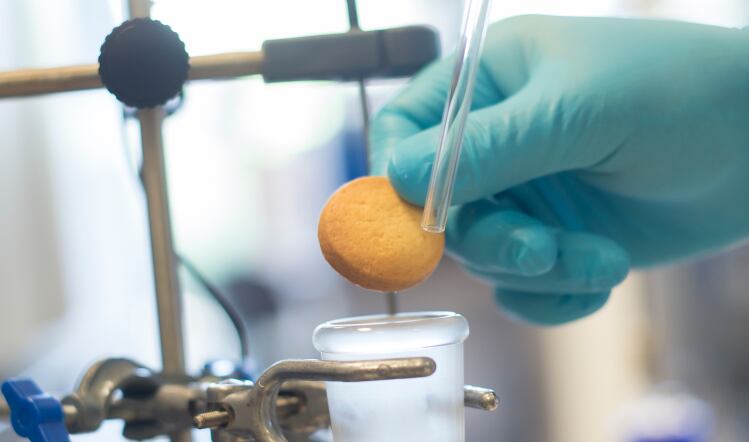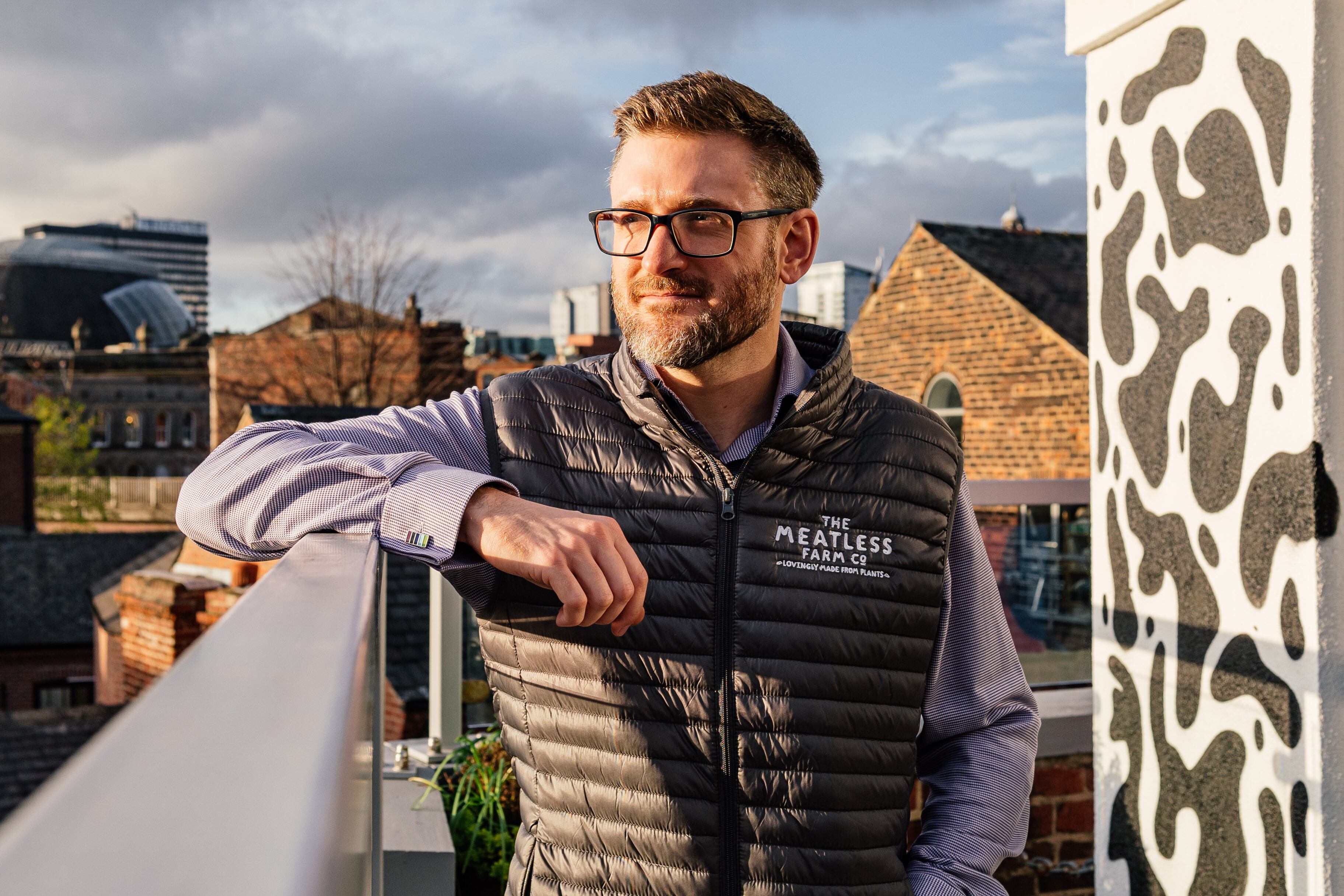When, in 2018, the networking arm of Innovate UK set out a top-five priority list of pre-competitive research and development (R&D) areas for food and drink manufacturing, Professor Tim Foster knew he was already ahead of the game.
“One of the research areas was on healthier foods, two focused on sustainability, and the other two concerned flexible and scalable manufacturing, and digital manufacturing,” explains Foster. “These were all themes we had been working on at the Centre for Innovative Manufacturing [CIM] here at the University of Nottingham.”
Founded in 2013, CIM – or, to give it its full name, the Engineering and Physical Sciences Research Council (EPSRC) Centre for Innovative Manufacturing in Food – was one of three centres that, together, engaged with more than 120 food businesses on collaborative R&D projects over the course of six years.
Funding for CIM ended in March and, as head of the centre, Foster is keen to talk about its and Nottingham’s other achievements in research around reformulation, waste valorisation and understanding shopper behaviour – as well as the legacy it has left for both the university and industry.
Funding awarded
First proposed by PepsiCo, CIM received £7.5m in industry funding, £5.6m from the EPSRC itself and a combined £1.1m from the three centres involved – Nottingham, the Centre for Formulation Engineering at the University of Birmingham, and Loughborough University’s Centre for Sustainable Manufacturing and Recycling Technologies.
As much as the work undertaken, Foster says CIM was about nurturing the next generation of thought leaders. People development was also a priority during a 15-year career at Unilever, prior to joining Nottingham in 2007 (see box).
“You only develop new technologies by developing people,” he says. “CIM has nurtured some exciting new talent, who are being picked up by industry and academia.”
However, as professor of food structure, Foster’s primary expertise lies in understanding the microstructure of food, and the interplay between ingredients and processes. This has led to him pioneering a number of reformulation projects throughout his career.
“We’ve been looking at reducing the energy density of foods with low-calorie alternatives. We’re also working on reducing saturated fatty acid reduction using waxes.”
New developments in salt
Also of note are the development of Tate & Lyle’s Soda-Lo, salt ‘microspheres’ that allow manufacturers to reduce sodium by between 25–50% in products, with no loss of taste; and an ongoing Nottingham project, funded by Innovate UK, on ‘nano’ salt.
Other projects have centred on waste valorisation – capturing discarded material in the manufacturing process or from where it was grown.
“By using the waste streams of heavy fibre content, we’ve managed to reduce whole wheat flour by 100% in certain applications,” Foster explains. “In one project, run in conjunction with researchers in India, we’ve created a waste valorisation technology that is applicable to something 750 million Indians eat every day. So, it’s potentially massive.
“Valorisation of pea pod and pea vine, which is left in the field when peas are harvested, is another big area. Again, it has the potential to replace high-energy density materials in foods. We’ve also done work with Branston on creating value-added materials from potatoes usually graded for anaerobic digestion.”
With commercial confidentiality a factor, Foster is reticent to go into too much detail. He acknowledges, however, that the rise of open innovation in the industry – which emerged when companies found it increasingly difficult to conduct their own research on nutrition that potentially needed justifying with claims – has helped “break down walls” along the supply chain.
Less positively, Foster claims the associated downsizing of R&D budgets by businesses has also made them much more short-term focused. “You could argue it’s because they need to stay competitive,” he suggests. “I know of a lot of technologies at Unilever from 10 to 20 years back that still have not made it onto the marketplace.”
Rapidly changing retail landscape
Manufacturers may be constrained by R&D budgets around innovation, but when it comes to the rapidly changing retail landscape, Foster says there is no hiding place.
With diminishing brand loyalty and consumers able to choose goods at the click of a button, he believes the era of ‘distributed manufacturing’ – decentralised manufacturing bases connected by an advanced IT network – is finally upon us.
“The argument we always come up against in favour of mass production is economies of scale, but that only works when the consumer is reliable,” says Foster. “If the consumer starts to be incredibly flexible, then manufacturing needs to catch up.”
The challenge will be how to make food that’s deliverable within very short periods of time, he adds. “It will have a massive impact on the manufacturing process, from cleaning to allergen control. Rather than factories making one specific product, they will have to adapt to making many.”
Much of Foster’s insight on flexible and adaptive manufacturing has been gained by a project by Notting-ham’s computer science department that ran parallel to CIM. “Collaborating with Cranfield University, one of the areas we’ve worked on is crowdfunding for NPD – effectively, putting consumers at the heart of product development. Again, it’s a consumer change firms will have to get used to.”
Though CIM was scheduled to end this year, follow-on funding was applied for, but was rejected by EPSRC. With five patents and more than 90 peer-reviewed publications over its lifetime, Foster says CIM delivered against its initial targets. However, one of its biggest successes is how it has been used to stimulate further work at Nottingham.
“Putting a food capability in place resulted in the university setting up our Future Food Beacon of Excellence, dedicated to looking at the challenges around global food security.”
Ultimately, Foster believes CIM is a great example of what can be achieved when industry and academia collaborate on large-scale projects. “It showed that thinking big is the way forward in solving the world’s problems.”
Professor Tim Poster
Job title: Professor of food structure, The University of Nottingham.
Domestics: Married with one son.
Career history: Having graduated with a PhD in biopolymer physical chemistry from Cranfield University in 1992, Foster joined Unilever, where he worked as a senior scientist and led a number of research groups. He left for the University of Nottingham in 2007, where he oversaw the creation of the EPSRC Centre for Innovative Manufacturing in Food and the Future Food Beacon of Excellence. He was head of the Division of Food Sciences from 2014 to 2019.
Away from work: A former cricket coach, Foster is now happy to watch his son coach the Great Britain national American football team.




